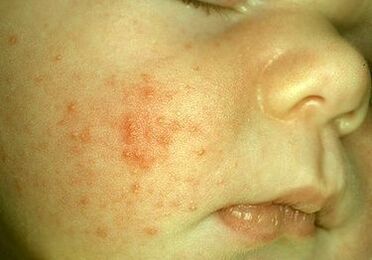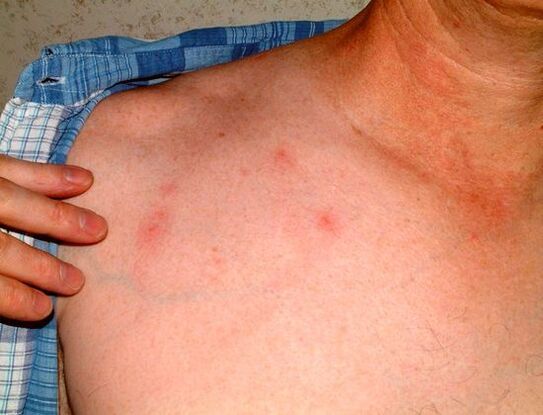
What do you know about human parasitic diseases? The variety of human parasites is not limited to domestic helminths.
There are several types of parasites that penetrate and live under a person's skin, causing the same unpleasant symptoms as internal parasites.
In addition, diversity is not limited to helminthiases - there are ticks, insects and protozoa.
Each of them has certain symptoms and manifestations of which you should be aware.
Equally it is also equally important to know how to get rid of subcutaneous parasites.
Varieties of parasitic skin diseases
What kind of parasites can live under human skin? The most diverse, among which are insects, helminths, ticks and protozoan unicellular organisms. Human skin lesions from different types of parasites are distinguished into a special category of parasitic diseases.
Each group of diseases is united by characteristic pathogens:
- The simplest organisms cause protozoan skin diseases.
- Ticks cause acariasis lesions on the skin.
- Insects can cause entomotic skin lesions.
- Helminthiases develop as a result of infection with helminths.

All of these pathogens of human parasitic skin diseases are equally unpleasant and require diagnosis and treatment. Long-term neglected forms can lead to irreparable consequences from blindness to death. Fortunately, it can be added that most of the list of parasites living under human skin is typical mainly for places with hot and humid climates.
Diseases caused by protozoa
Leishmaniasis
Leishmaniasis is caused by the simplest, single-celled pathogens carried by mosquitoes. A person infected with leishmaniasis becomes a reservoir for further spread of the infection. After being bitten by a mosquito, which is the main host of Leishmania, a person develops cutaneous or visceral leishmaniasis. Cutaneous leishmaniasis manifests as deep ulcers or pustules and extensive skin lesions. The mucocutaneous form of the disease leads to significant deformities of appearance, especially of the face. Respiratory edema in leishmaniasis can be fatal.
Leishmaniasis occurs in 90 countries around the world and is a very common disease in Syria, Iran, Afghanistan, Saudi Arabia, Brazil, Peru.
Diseases caused by ticks
Demodicosis
A disease caused by a parasite that lives under the skin on the sebaceous glands and follicles of living human hair. This is a microscopic spider - demodex. It is mainly located on the eyelids, facial skin and ear canals. Rarely - on the chest and back.
Demodex damage causes complicated acne, dermatitis, which worsens in spring and autumn. The skin appears red, hyperemic, bumpy, inflamed. The ciliary edge of the eyelid is usually swollen, red, the eyelashes are glued together, along the edge of the eyelid there are discharges in the form of crust, and the loss of the eyelashes is characteristic. Sometimes the disease persists without obvious manifestations, so ticks are considered a pathogenic condition. Usually, demodicosis worsens in people with impaired immunity, with diseases of the gastrointestinal tract, lungs and metabolic disorders.
mange
Another ubiquitous disease caused by mites called itching with itching. These mites erode passages in human skin, in which they lay eggs. The development of an adult tick is accompanied by a complex cycle. Usually this process occurs at night, so at this time the itching of the skin intensifies. The main diagnostic symptoms of the presence of parasites under a person's skin appear as small double red spots located nearby. These are double passages broken by a tick.

The disease is complicated by various infections that the patient brings in attempts to relieve itching: streptoderma, nodular seals, blood crusts around scratches, redness in the form of bloody blisters, and other skin lesions. Complicated itching can resemble urticaria, pyoderma, dermatitis, eczema, psoriasis.
Infection usually occurs through prolonged contact with sick people (it has been proven that scabies requires skin-to-skin contact, lasting up to 30 minutes; you should not discard the fairly low probability of infection when using ordinary household items).
Diseases caused by insects
All skin diseases caused by dipterans are collectively called myiasis.
Wolfarthiosis
The disease is caused by an insect called the wolf fly, which places larvae in the mucosa or wounds in the human body. The larvae destroy the tissues, releasing a special enzyme, causing severe pain, necrosis, edema, pus and gangrene of the affected tissues. They usually parasitize the eyes, nose, ears. The wolf fly is widespread in places with hot and mild climates.
Diseases caused by helminths
Dirofilarioza
A disease caused by round helminths. The source of infection is pets - cats and dogs. The carrier is a mosquito. After its bite, sexually mature individuals of nematodes begin to develop in the human body, which, as a rule, parasitize under human skin. Insect bites become more dense, inflamed and itchy. A characteristic feature of the pathogen is its ability to move under the skin, therefore, the disease is accompanied by a feeling of movement, crawling inside the inflamed seal. Sometimes a nematode can be seen under the skin; cases of an individual coming out of the mucosa of the eye are described.
Allergic reactions, fever, nausea and weakness can be accompanying symptoms.
Strongiloidosis
A disease caused by the larvae of parasites that invade a person’s skin if he walks barefoot on the ground. Outbreaks appear to be exacerbated during pregnancy and in Georgia, Ukraine, Krasnodar Krai, Stavropol Krai. Roundworm larvae invade the skin and migrate beneath it, causing redness, itching of the skin, and the development of red blisters.
Treatment recommendations
General recommendations have been developed for the treatment of diseases caused by one or a human subcutaneous parasite. The most important for our region is the treatment of strongyloidosis, scabies and demodicosis. Treatment is prescribed after the diagnosis of the disease and only by a specialist. Some complications and manifestations of the disease require an individual approach to treatment.
- Helminthiasis is recommended to be treated with antiparasitic drugs.
- For the treatment of itchy itching, oils, creams and other effective means are used. In the fight against scabies, a treatment regimen and a system of preventive measures have been developed for contact persons.
- Demodex treatment is performed with complex measures to strengthen the immune system, treatment of gastrointestinal diseases and other procedures. Scabies ointments are used directly on the skin, as well as various cosmetic procedures.

Subcutaneous parasitic diseases require effort to treat, so it is best to prevent infection by following basic rules of personal hygiene. It is not superfluous to know the common symptoms that accompany such diseases, so as not to come into close contact with sick people.




























